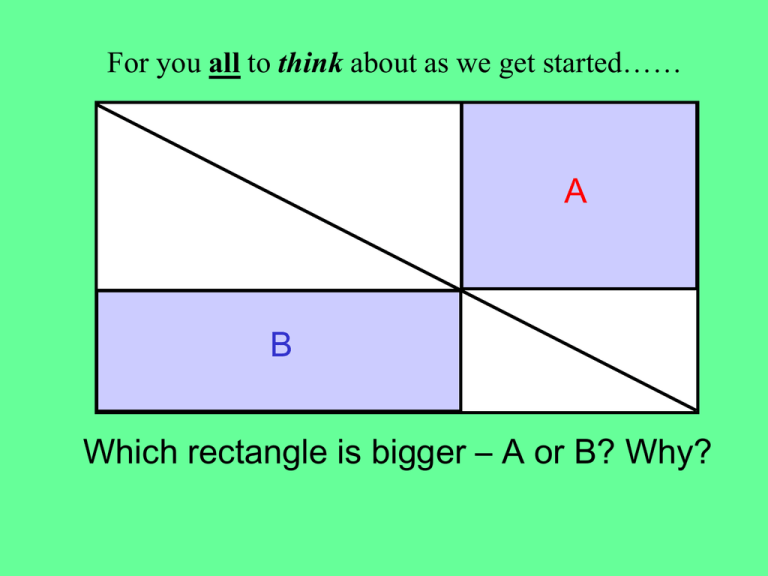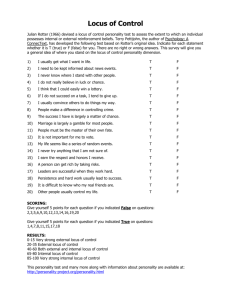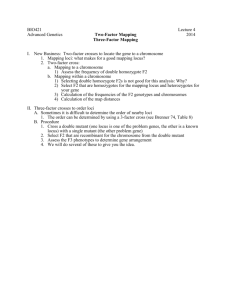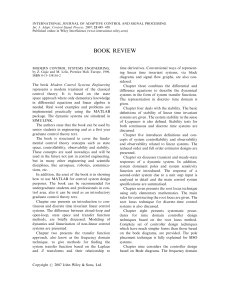LOCI_and_CONSTRUCTION
advertisement

For you all to think about as we get started…… A B Which rectangle is bigger – A or B? Why? Starter – Using Scales….. A scale on a map says: 1cm = 10km 1. How far (in km) is a distance measured as 4 cm on the map? 2. What about 0.5 cm? 3. How far on the map (in cm) is 15km? Starter – Using Scales….. A scale on another map says: 1cm = 4km 1. How far (in km) is a distance measured as 7 cm on the map? 2. What about 1.5 cm? 3. How far on the map (in cm) is 20km? Starter – Using Scales….. A scale on another map says: 5cm : 20 km 1. How far (in km) is a distance measured as 25 cm on the map? 2. What about 11 cm? 3. How far on the map (in cm) is 28 km? ANSWERS – Using Scales….. 1cm = 10 km 1. 40 km 2. 5 km 3. 1.5 cm 1cm = 4km 1. 28 km 2. 6 km 3. 5 cm ANSWERS – Using Scales….. 5cm : 20km 1. 100 km 2. 44 km 3. 7 cm Loci and Constructions By the end of this lesson you should: • Know the meaning of the words LOCUS and LOCI (ALL) • Have mastered 2 of the four construction skills (ALL) • Have mastered 3 of the four construction skills (MOST) • Have mastered all four construction skills and be able to describe the steps (SOME) Key Questions: Be prepared at the end of the lesson to describe to the class the method you have used to draw two of the four constructions we will have looked at today. I will be choosing which pupils will share their methods – so be clear and be prepared! LOCUS Imagine a point moving and leaving a path behind it as it moves. • This path is called the Locus of the point. It can be a curve, or even a circle! If we have two or more paths, we use the word Loci. This is the plural of Locus. We are now going to look at four different LOCI We will also learn the four skills needed to draw (or construct) them. Skill 1 A point moves so that it always stays the same distance away from another fixed point On your sheet mark the locus you get if the moving point always stays exactly 4cm from the x What will your locus look like? What equipment will you need to draw it? A CIRCLE ….. With a radius of 4cm Title: Same distance from a point Same distance from a point x Skill 2 A point moves so that it always stays the same distance away from a fixed line On your sheet mark the locus you get if the moving point always stays exactly 2cm from the line What will your locus look like? What equipment will you need to draw it? A Parallel line … and ? Title: Same distance from a line Same distance from a line Skill 3 A point moves so that it always stays the same distance away from two fixed lines (which meet at an angle) Title: Same distance from two lines What do you think the locus will look like? What equipment will you need to draw it? COMPUTER SIMULATION The locus you have drawn should have cut the angle exactly in half This line is called the ANGLE BISECTOR Working with your partner, write a description of the method you used to draw this locus. Skill 4 A point moves so that it always stays the same distance away from the points at each end of a fixed line Title: Same distance from two points What do you think the locus will look like? What equipment will you need to draw it? COMPUTER SIMULATION The locus you have drawn should have cut the line exactly in half and at 90° This locus is called: The PERPENDICULAR BISECTOR of the line. Working with your partner, write a description of the method you used to draw this locus. Practice Tasks 1. In your pairs, draw an angle, any size and any way around, on the reverse of your skills sheet. 2. By helping each other, bisect this angle using the method you have been shown. 3. Now draw two points and a line joining them. 4. Again, helping each other, construct the perpendicular bisector for this line. 5. Repeat 1 to 4, but swapping roles. Key Questions: Describe to the class the method you have used to draw two of the four constructions we will have looked at today. Use the descriptions of the methods that you wrote to help you. I will be choosing which pupils will share their methods – so be clear!!







